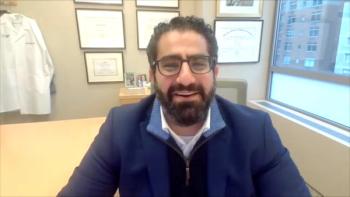
Danish Study Rekindles Debate on Overdiagnosis of Breast Cancer
A screening study conducted over 2 decades in Denmark has raised questions about the need and implications of biennial mammography for women between 50 and 69 years of age.
A screening study conducted over 2 decades in Denmark has raised questions about the need and implications of biennial breast cancer screening (mammography) for women aged between 50 and 69 years. The researchers concluded that 1 in every 3 invasive tumors in women who were offered screening represent overdiagnosis.
The American Cancer Society (ACS) recommends mammograms should be an option for women at age 40, with a recommendation for an annual mammogram-based breast cancer screen by age 45. By age 55, the ACS guidelines recommend screening every other year. The United States Preventive Services Task Force
For their study,1 the authors included women who were or were not offered breast cancer screening between 1980 to 2010 in Denmark. Trends in the incidence of advanced (greater than 20 mm) and nonadvanced (less than or equal to 20 mm) breast cancer tumors in women who were screened or not. The authors compared the incidence of advanced and nonadvanced tumors in the 50- to 84-year-old age group in screening and nonscreening areas.
The results? While screening did not lower the incidence of advanced tumors, the incidence of nonadvanced tumors increased in the screening versus prescreening periods (incidence rate, 1.49 [95% CI, 1.43-1.54]). Two different approaches deduced different rates of overdiagnosis in 2010:
· 271 invasive breast cancer tumors and 179 ductal in situ tumors (DCIS); overdiagnosis rate, 24.4% (including DCIS).
· 711 invasive tumors and 180 DCIS; overdiagnosis rate of 48.3% (including DCIS).
Karsten Juhl Jørgensen, MD, deputy director of the Nordic Cochrane Centre in Denmark, who led the study,
Jørgensen added that while there was no reduction in the frequency of late-stage tumors in the screened areas of Denmark, “We did see a huge increase in the occurrence of early-stage cancers.”
The debate over overdiagnosis of breast cancer has been around for a while. A
In an editorial accompanying the study,2 Otis Brawley, MD, chief medical officer of the American Cancer Society, wrote that understanding the limitations of screening is important to successfully utilize the tool to save lives. According to Brawley, physicians are still in the blind on which tumors need treatment and which can be monitored. “One of my nightmares is people will read this paper and elect to not get treated,” he wrote.
References
1. Jørgensen KJ, Gøtzsche PC, Kalager M, Zahl P. Breast cancer screening in Denmark: a cohort study of tumor size and overdiagnosis [published online January 10, 2017]. Ann Intern Med. doi: 10.7326/M16-0270.
2. Brawley OW. Accepting the existence of breast cancer overdiagnosis [published online January 10, 2017]. Ann Intern Med. doi: 10.7326/M16-2850.
Newsletter
Stay ahead of policy, cost, and value—subscribe to AJMC for expert insights at the intersection of clinical care and health economics.















































